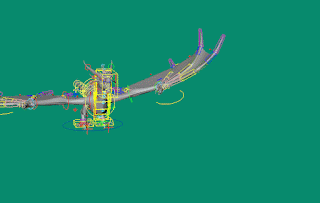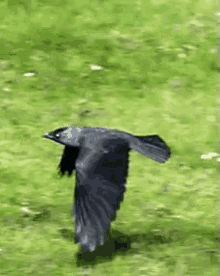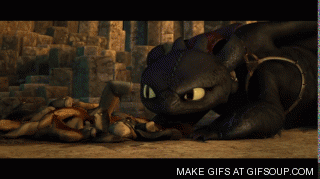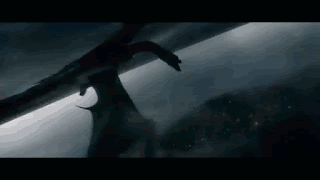Here is my showreel of the animations created over the duration of this project, I hope you enjoy!
Wednesday, April 28, 2021
Animating a dragon ~ part ten ~ The Showreel
Monday, April 26, 2021
Animating a dragon ~ part nine ~ evaluation
With this blog post, I wanted to do an informal evaluation of this project, before putting together a final showreel for the next and final blog post of this project.
When I started out with this project, I hadn't animated anything other than bipedal movements before, let alone flying. However, I wanted to really dig into animal animation with this project, making somewhat of a case study of references. I feel that I have achieved this.
I started off with discussing what kind of animations I would like to create, such as bat like flight cycles:
In conclusion,
I am quite pleased with my work over the duration of this project, I believe it to be of decent quality, but not without plenty of room to improve, such as adding more rotational movement to the torso, for a few of my animations with this dragon rig, the torso has felt quite rigid. The same goes for the tail, I feel like if I had dedicated more time for more animations than I could've really gotten my head around the tail movements, whereas I currently feel that they are somewhat awkward. Going forwards, I hope I be able to make time to play around with this rig some more, as it is an extremely high quality rig as well as quite fun to animate.
Sunday, April 25, 2021
Animating a dragon ~ part eight ~ animating a bat-like ground movement cycle
With this animation, I was taking primary reference from this gif of a bat doing a weird hop thing, I figured it had potential to create a feral movement for a dragon.
First I started with the arm movement and the body movement.
Having next animated the legs as well as the head movement, the animation was starting to come together. However, the head movement felt too fast, and the tail also needed movement.
After animating the tail and tweaking the head movement, I was left with this, of which I am quite pleased, however it does feel a little bit goofy, perhaps it would be good as a start to a take off or just after a landing.
Thursday, April 22, 2021
Animating a dragon ~ part seven ~ animating a glide
I realised that I had forgotten to do a glide and so I set out to do a glide animation.
However, I soon found myself listening to the How to Train Your Dragon soundtrack and getting really into this animation. However, I think that my hours of work paid off.
I found that due to the wing movement during the glide, videos were necessary as gifs would miss a lot of the small movements that really make up this animation.
As usual, I started with the wings, animating one and then another.
I was using clips from How To Train Your Dragon as reference for the gliding, as the whole film has some amazing shots of this being used.
With both wings having this animation, the glide was really starting to come together. However, it seemed like the movement was far too fast, however I wanted to keep the same frequency of movement, so I opted to make the movement far smaller.
The wing on the left is the old one and the one on the right is the improved movement, I think that it is a real improvement. I also started to animate the head movement here, adding wind effects to some of the horns, however opting to keep the middle spine rigid as while the head spines were able to be animated, the rig did not allow for the spines anywhere else along the dragon to be animated.
With both wings now matching, the animation was really starting to come together.I then started animating the feet, I decided to add wind movements to the toes as well.
Overall however, I am very pleased with this animation.
Monday, April 19, 2021
Animating a dragon ~ part six ~ animating bird-like flight cycles
In this post, I will be detailing over how I am going about animating bird-like dragon flight cycles. For these animations, I will be using the gifs in the previous post as reference for these flight cycles, much like how I did with the bat animations. One thing I noticed about the way how robins, crows and owls fly is that it is somewhat a progression of movement, with owls moving their wings the least and robins moving theirs the most. This progression will become more clear with the animations down below.
I'm quite pleased with how the tail come out as well, in the Bat flight cycle, it seemed quite janky whereas this feels more natural.
With this post, I would have accomplished the basics of what I set out to do with this project, analysing several different styles of flight from real animals and using those flight styles as reference for several different dragon flying cycles.
In my next, and quite possibly final post, I shall be be doing an evaluation of this past project as well as posting a showreel of the work done.
However, before that post, I would like to attempt to do a ground movement cycle for the dragon, taking inspiration from the bat's weird and slightly creepy leaping jump movement.
Thursday, April 8, 2021
Animating a Dragon ~ part five ~ research cont.
In this blog post, I shall be continuing my research into how different animals fly so that I can use that as reference for animating a dragon.
This time, instead of a bat, I shall be analysing birds.
Before I begin, I would like to note that I expect different types of birds to fly differently, therefore I shall be researching different bird types, this mainly being something like a bird of prey along with a smaller bird like a Robin. I may also see how pigeons fly because pigeons are funny, however seagulls are the spawn of the devil.
To start off with, I will be analysing how a barn owl flies, which is widely known to be a silent flyer, something that would be terrifying if a huge dragon was able to do the same.
Wednesday, March 24, 2021
Animating a dragon ~ part four ~ discussion and analysis of dragon animations in media.
While I'm animating a dragon, mostly inspired by real life references such as bats and bears, I thought I'd take a blog post to talk about how dragons have appeared in movies, video games and tv shows. This is because I want to talk about dragons and it gives me an excuse to watch films with dragons in.
To start off with, I'm going to talk about a film series: How to Train Your Dragon.
Produced by Dreamworks, however this isn't Dreamworks first time animating a dragon. In 2001, Dreamworks produced the masterpiece that is Shrek.
We can see from this that it's apparently generally agreed that dragons all fly in this manner. Now, while this does make sense, massive creatures would take a lot of energy to be flapping constantly, it would make sense that they would try to move as much air with as little effort, hence why realistic styled dragons, like Smaug, are stylised to have such large wingspans. Now, while the general movement of wings are very similar across all dragons that I've talked about here, they aren't all the same. A lot of the dragon animations, especially the more realistic and detailed animations, have different ligaments along the wing bending when flapping, as well as having slight adjustments when gliding.
From this research, it seems apparent that along with flapping animations, I will also need to do at least a gliding animation, however if I have time, I would also like to experiment with other animations to see what other flying animations I can create that are unique without looking unnatural.
Friday, March 12, 2021
Animating a Dragon ~ part three ~ animating a bat-like dragon flight cycle.
Animating a flight cycle
This week, I'm starting the animation of the dragon. Relating to the last post, this will be a bat-like flight cycle.
First, I'll animate the wings, getting them into key poses and then in-betweens. Afterwards I will then animate the head, body and finally tail. The reason for animating it in this order is that all of the motion that the dragon is doing is in the wings, everything else is to support and to power that movement.
One thing I tried here was using playblasts instead of gifs, which work well for see a rough render of the animation, however due to not being able to loop, has it's drawbacks, in future WIP posts, I will try to include more of a mix.
Tuesday, February 16, 2021
Animating a Dragon ~ part two ~ beginning research
Due to how much of a case study I would like this to be, I plan to conduct extensive research over the next several weeks.
This week, I shall be focusing on bat flight.
This is one of the creatures I would like to use as inspiration for animation, because while Dragons appear closest to lizards, the bone structure of their wings, especially in the case of the rig I'm using, seem closer to that of a bat than a bird or a flying lizard of anything kind (not that they really exist, more gliding lizards).
We can also the body is almost at an 45 degree angle to the head, something that may be worth exploring with the dragon rig.
Another thing of note with this is how the legs are used in this flight, now while with dragon rig does not have any of the wing connected to the legs like how this bat does, I think it would still be an interesting and potentially successful thing to see what the dragon rig looks like with similar leg motion when in flight.
Thursday, February 4, 2021
Animating a Dragon ~ part one ~ introduction.
Over the next couple months, I will be animating a dragon taking inspiration from real life creatures as well as reviewing and analysing cases where dragons have already been animated, such as How to Train Your Dragon and The Hobbit films.
The Rig
Due to wanting to focus purely on the animation side, I will not be able to rig a dragon of my own, so I shall be using this rig: https://truongcgartist.artstation.com/store/1Vlw/maya-dragon-rig-jaemin-dragon
I have chosen this rig as it has plenty of controllers, along with Set Driven Keys for the wings, allowing for the wings to be furled and unfurled easily.
The rig also features controllers for animating wind in the skin between the bones in the wings.
A big bonus of this rig is that it can be found at the student-friendly price of free! However paying $1 for it is more than worth it as it is a great rig.































